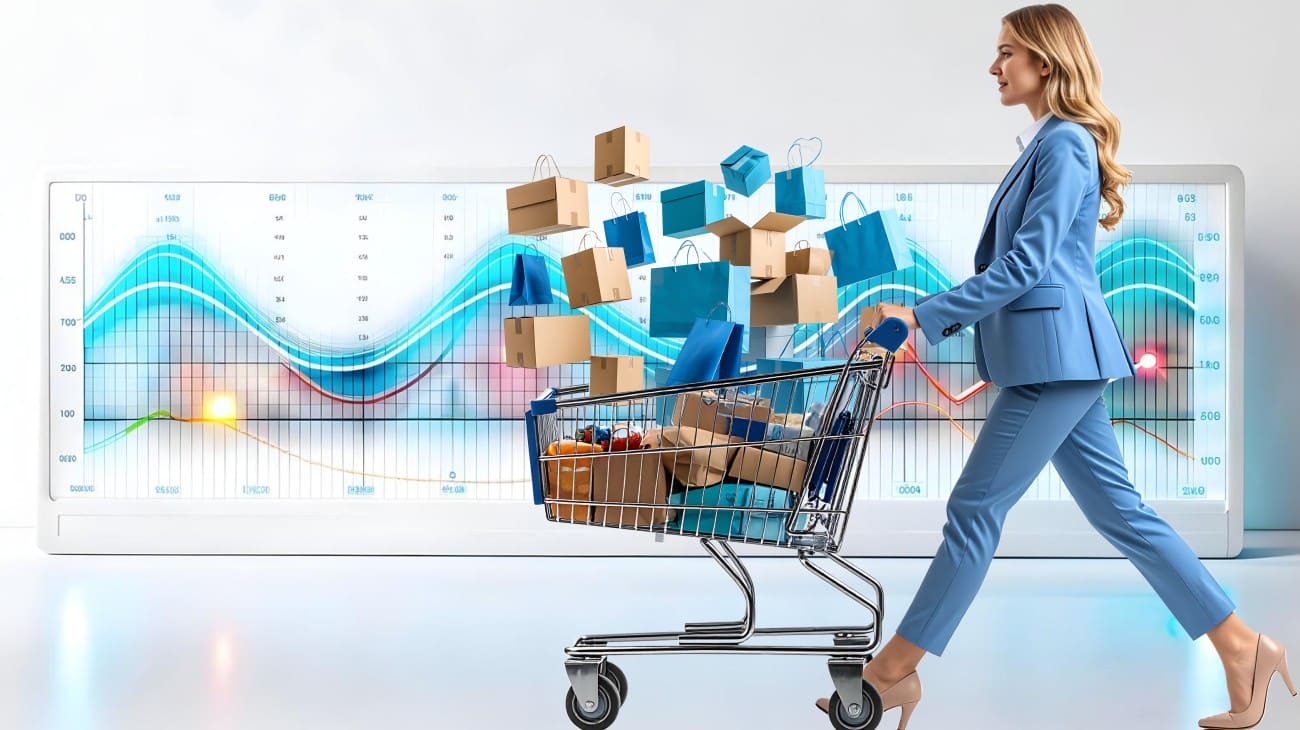Modern markets are constantly evolving in their competition for consumer attention. Let’s talk about a few trends that, in our opinion, really drive sales.
Customization is a natural step in the development of marketing in the retail of the future. It allows improving the buyer experience, making attractive offers to a specific person, thereby increasing sales efficiency.
For example, Wyflo has integrated conventional wine suppliers into its supply chain based on customer-focused taste preferences. All information was systematized based on feedback from customers.
Introduction of customization systems in modern markets involves the collection, storage and processing of information. Until recently, there was no such technical capability – there were errors when transferring information from consumer questionnaires to the database.
Today customer identification is provided by loyalty cards, and analytics is performed by specialized software.
Another striking example of customization in retail is the Kroger supermarket chain. The company, using advanced analytics and information from the loyalty program, began to “predict” the desires of consumers. In one of the stores, the shelves were replaced with digital displays – they light up when they detect a passing customer who has an item in the shopping list that is nearby. Sensors keep track of what customers are buying and provide a timely signal to restock shelves. The software also analyzes the purchases of each customer and makes product recommendations.
Contactless Shopping
A contactless digital store is a new retail format. It has become one of the main trends in retail and will hold this position in the next few years.
It’s not just that amidst the pandemic employers and consumers have begun to think about their own protection and health. There are fundamental changes in the behavior of buyers and the development of modern technology, which is fundamentally changing the entire retail industry.
Why the buyer chooses contactless shopping?
- Desire to save time.
- Health concerns.
- Good opportunity to choose the format of the purchase.
The format of contactless shopping includes shops and cash desks without sales personnel, drone delivery (Amazon), interactive self-service fitting rooms (for example, the Me-Ality solution), car delivery (Instacart), online stores.
Process Automation
Many processes in retail can be automated, especially when it comes to marketing and displaying goods on merchandise shelves (merchandising automation).
One of the latest technical solutions for retail is computer vision. Different points of the stores are equipped with cameras or sensors that allow collecting data about consumers (a buyer’s profile is generated), purchases and different situations on the trading floor.
“Vision” addresses numerous tasks:
- segment the customer base based on video surveillance;
- recognize commodity items;
- run merchandising optimization;
- recognize bank cards;
- create augmented reality for a number of products.
An example of food retail automation is the Tesco augmented reality store in South Korea. Banners with the image of goods are located in the subway. While waiting for the train, the consumer can choose and order products with home delivery using a QR code from a banner.
Another automated solution was proposed by Tokinomo. Their solution interacts with the consumer in real time directly from the merchandise shelf. A special machine shows the product to the buyer, demonstrates its best qualities, attracts attention with “noise”. The result is that the visibility of the product enhances, sales of the advertised brand rise, and customer involvement increases.
Omnichannel Marketing
The need for omnichannel marketing is driven by changes in customer behavior. Even before going to the store, the consumer compares prices in several stores, reads product reviews, installs market applications, obtains loyalty cards, and follows favorite brand on social media.
The more channels customers use, the more interested they are in buying. In addition, such a client spends in general 4% more and makes a repeat purchase 23% more often.
Oasis and Starbucks are making good use of this retail trend. Oasis managed to unite the website, mobile application and online stores. This greatly simplified the interaction of the retailer with customers. Shop assistants on the trading floor are “armed” with iPads used to quickly find information about goods and process purchases.
It is worth noting that the introduction of multiple sales channels does not require retailers to create their own infrastructure. For instance, any delivery may be provided by partners. As an example, in the US, food from supermarkets is delivered by Instacart.
Using the Sustainability Model
Sustainability aspect is increasingly penetrating into our lives, and brands and retail are one of its main advocates. Almost all major retailers have already adopted the principles of sustainable development as a basis. Many projects become part of the ecosystem.
As part of Sustainability management, retailers:
- choose energy efficient equipment, lighting and household appliances;
- minimize paper usage;
- properly dispose of waste;
- switch to alternative eco-packaging;
- provide support to charitable organizations within their operations.
Sustainability has become a powerful value proposition for the responsible consumer. And each seller can demonstrate its concern about the problems that are relevant to society, and its willingness to take part in socially desirable campaigns.
Targeting Digital
Present-day buyers are constantly-on-the-go and want everything around them to match their rhythm of life. The consumer wants not just fast delivery of products from the supermarket, but also timely great offers from stores. In this case, a convenient communication channel for the consumer should be used.
Advanced digital tools are aimed at ensuring that the retailer can cover all (or almost all) customer demands at once. At the same time, a user-friendly interface will be offered with the ability to compare prices, list of ingredients and delivery methods.
One of the latest technical solutions for retail is computer vision. Different points of the stores are equipped with cameras or sensors that allow collecting data about consumers (a buyer’s profile is generated), purchases and different situations on the trading floor.
“Vision” addresses numerous tasks:
- segment the customer base based on video surveillance;
- recognize commodity items;
- run merchandising optimization;
- recognize bank cards;
- create augmented reality for a number of products.
An example of food retail automation is the Tesco augmented reality store in South Korea. Banners with the image of goods are located in the subway. While waiting for the train, the consumer can choose and order products with home delivery using a QR code from a banner.
Another automated solution was proposed by Tokinomo. Their solution interacts with the consumer in real time directly from the merchandise shelf. A special machine shows the product to the buyer, demonstrates its best qualities, attracts attention with “noise”. The result is that the visibility of the product enhances, sales of the advertised brand rise, and customer involvement increases.
User experience customization is a trend that is just beginning to gain momentum. A comprehensive transformation of customer service is underway – a digital customer profile will be generated, which will be integrated into all retailer systems.
As a result, the number of loyal customers will increase, the average spend will grow, and high performance will be achieved in various areas. State-of-the-art platforms with integrated artificial intelligence will allow retailers to quickly collect and analyze information to determine the needs of the buyer.
One notable example is Kimetric, which has developed software based on facial recognition technologies to interact with sensors and cameras. It is able to determine the age of buyers, gender, clothing style and even mood to generate a customer-specific marketing offer. After a detailed analysis, AI distributes customers into certain groups and special offers are generated for each of them. The Kimetric solution is extensively used by the Mexican supermarket chain Femsa and the food manufacturer Mondelēz International.
Retail of the Future: What’s Next?
Innovation in modern retail is indispensable. Ahead of the consumer are fantastic supermarkets that have optimized the merchandising and marketing process. They will not just try to please and offer the product that the buyer needs right now. Everything will be built on the customer experience with the introduction of advanced automated systems. Also, the contact of a person with the marketstore itself will be minimized – the consumer will be able to “open” the shelves from the smartphone screen and set routes around the trading floor depending on the prepared shopping list.




